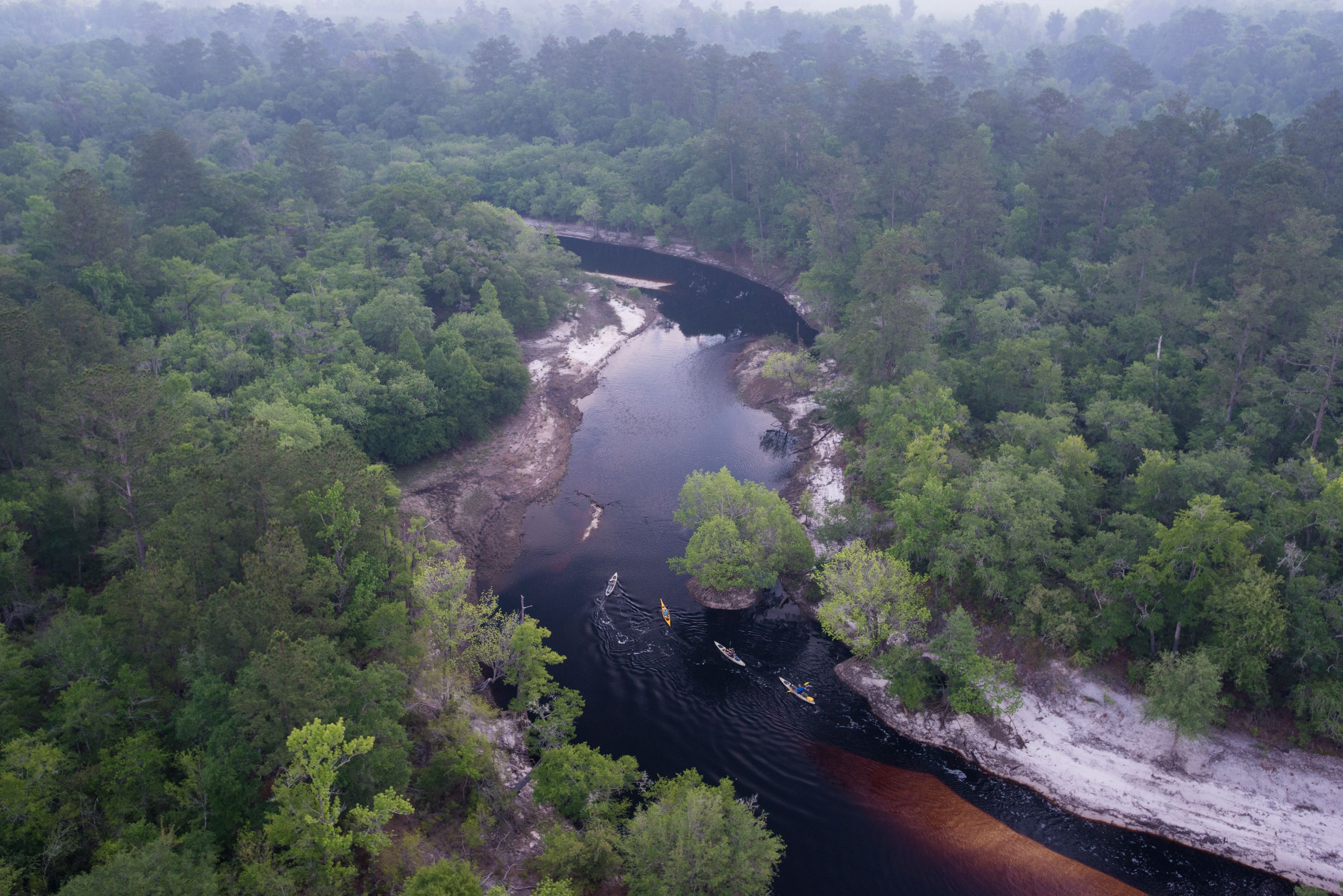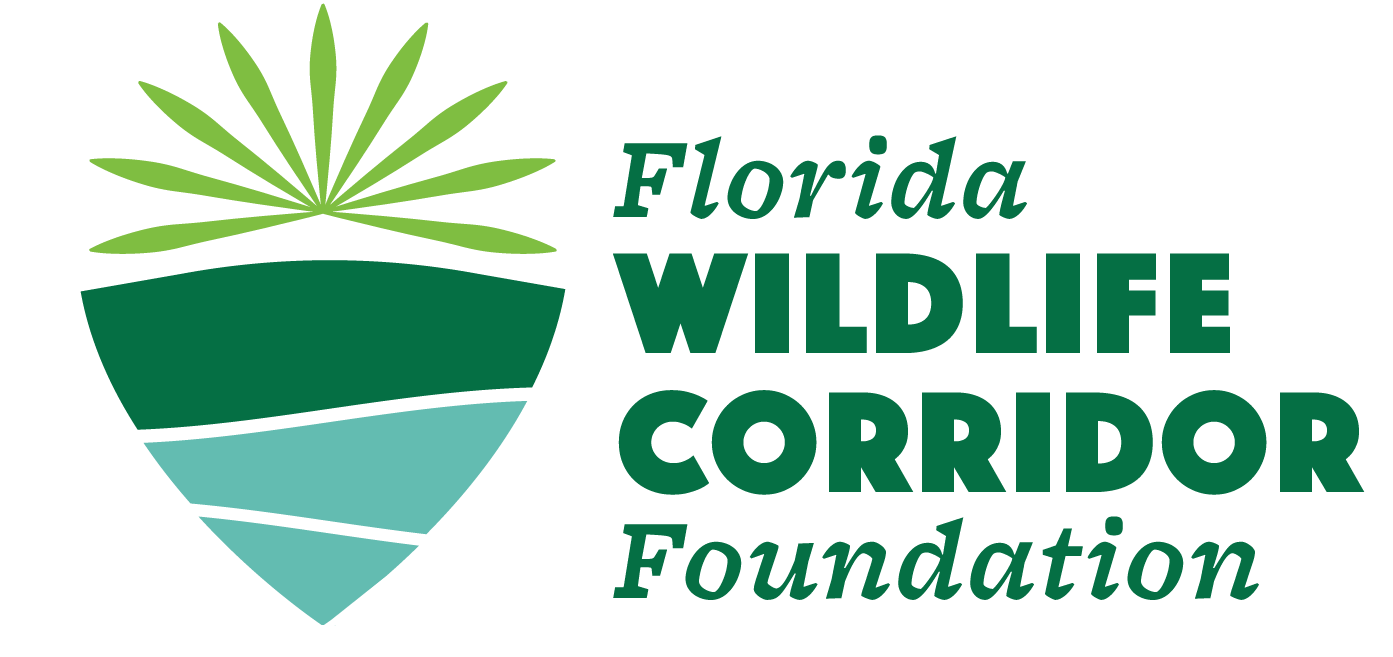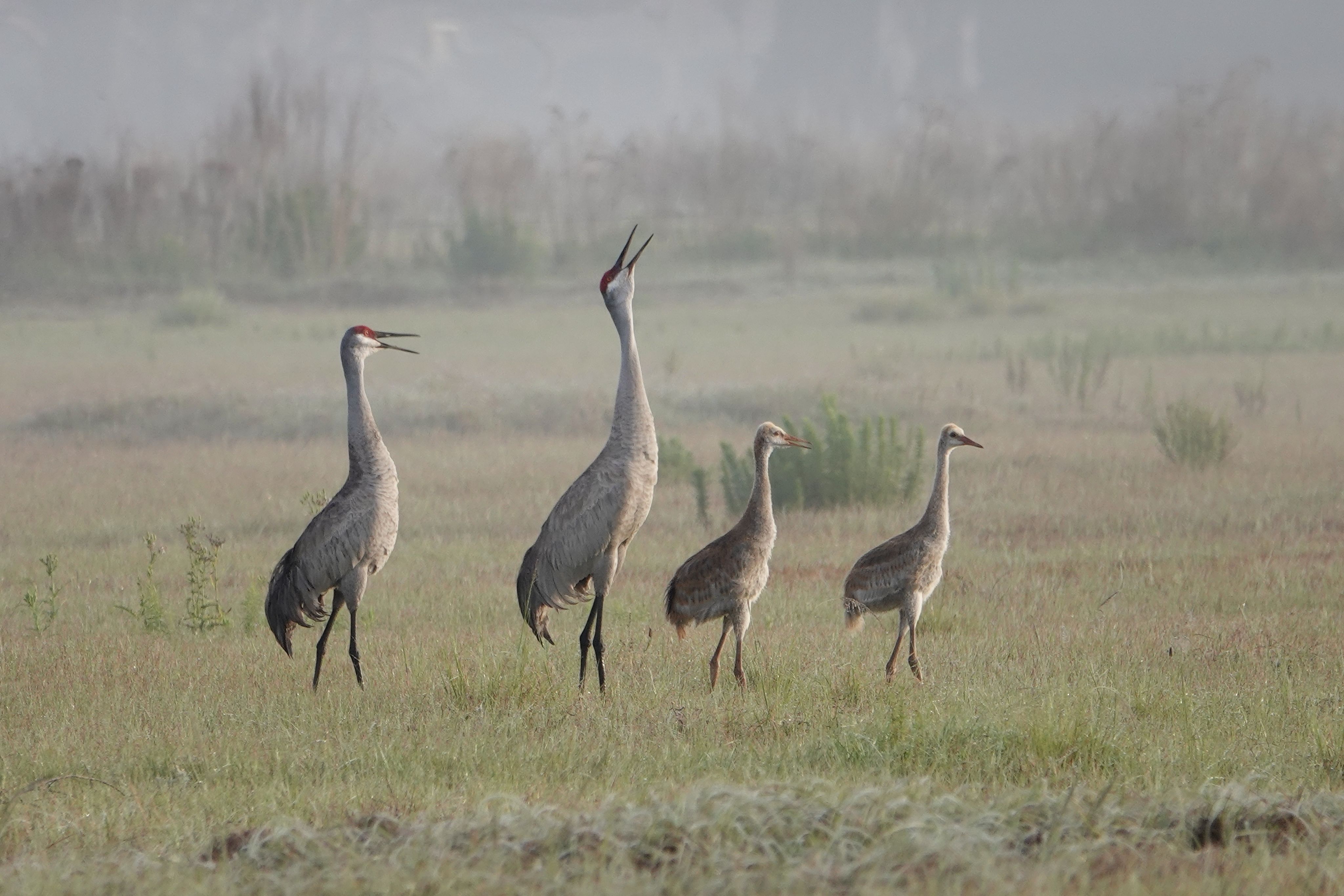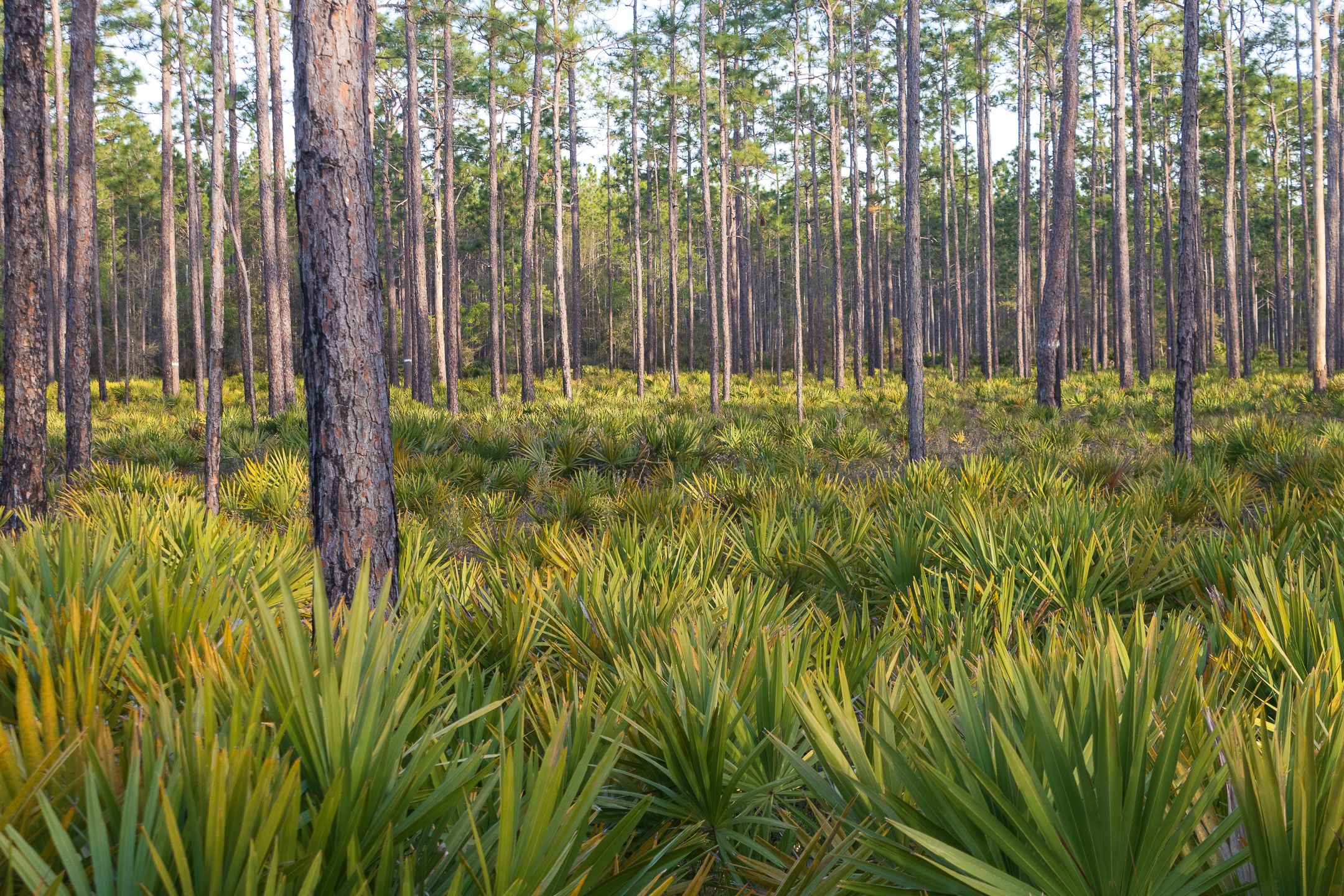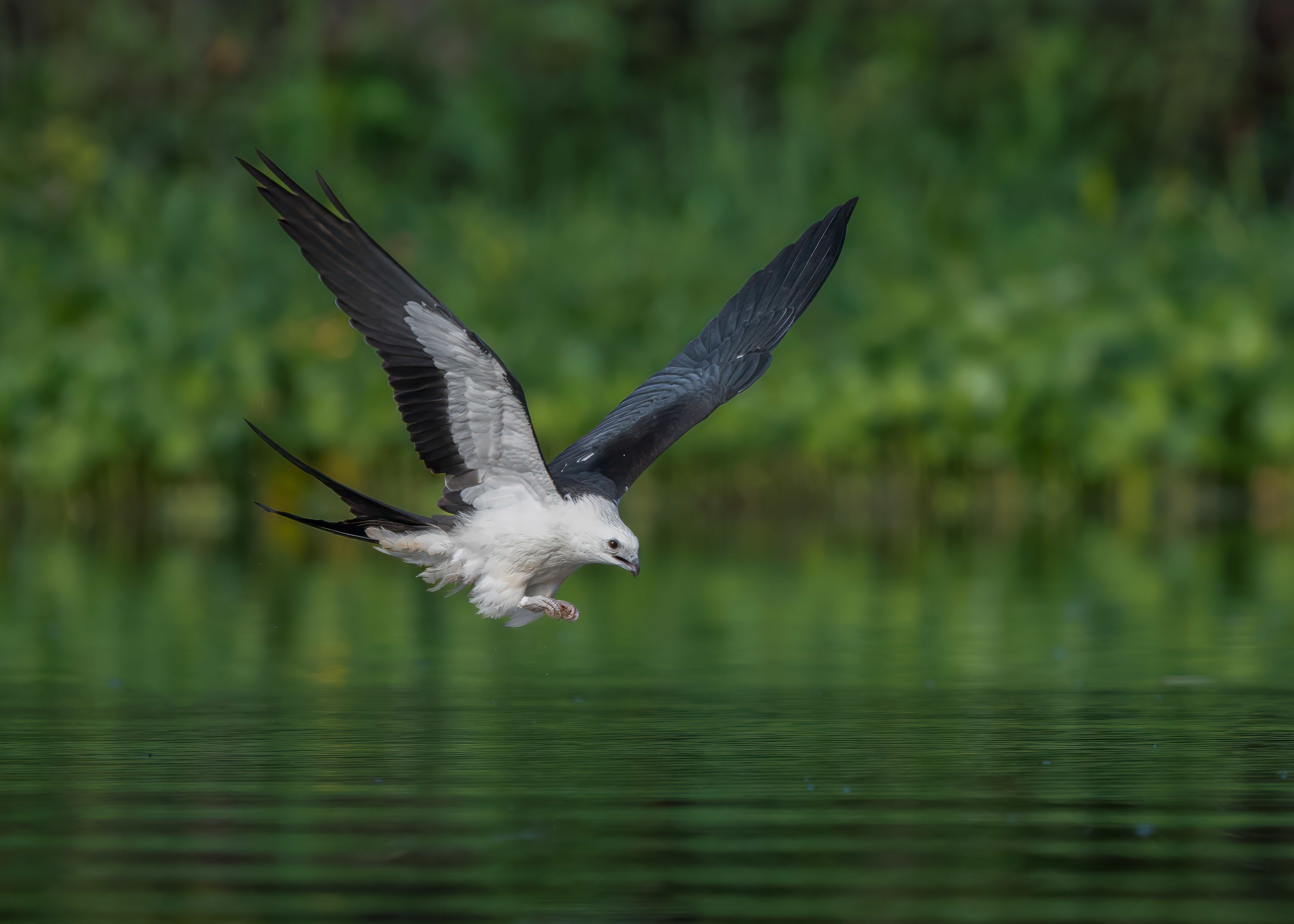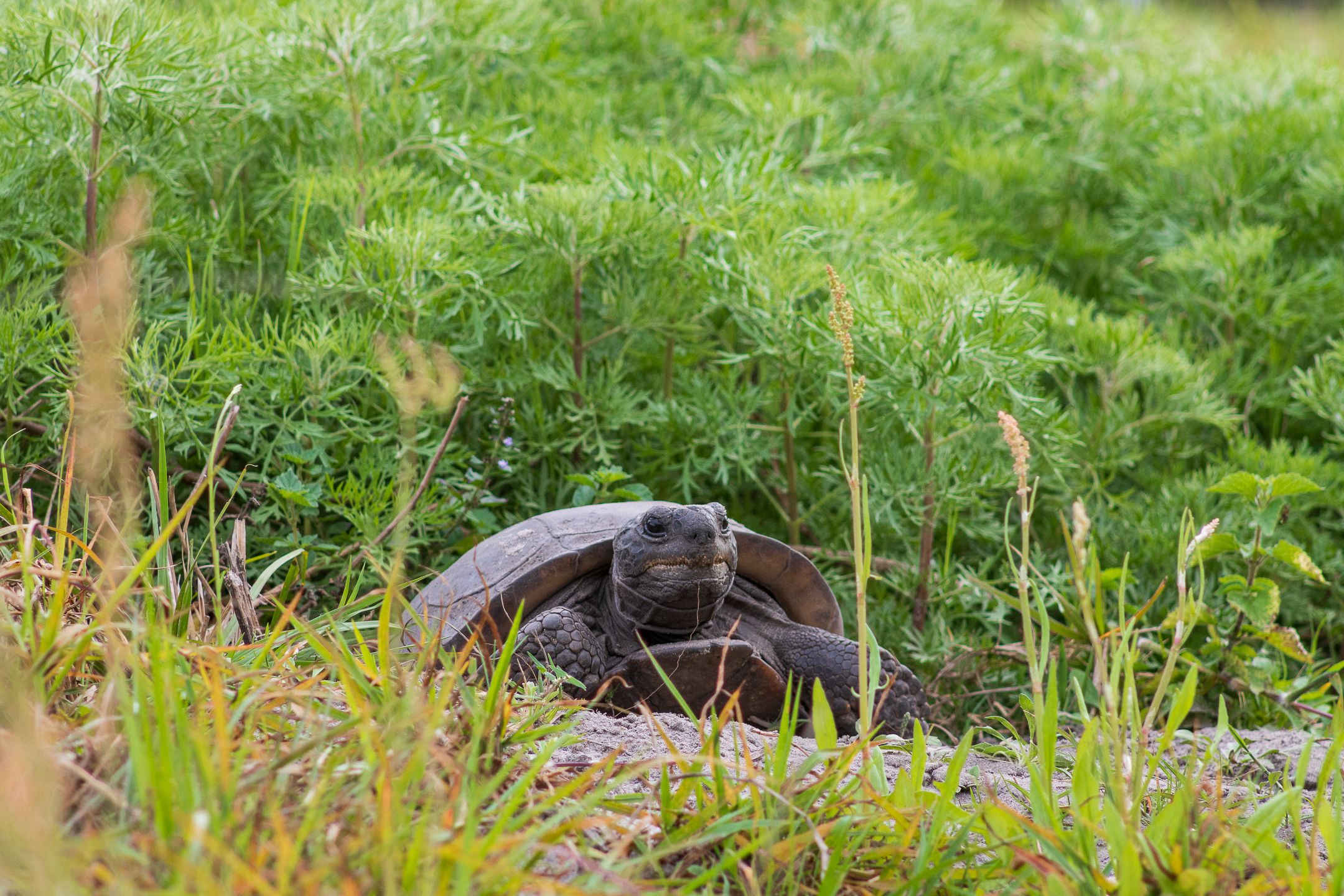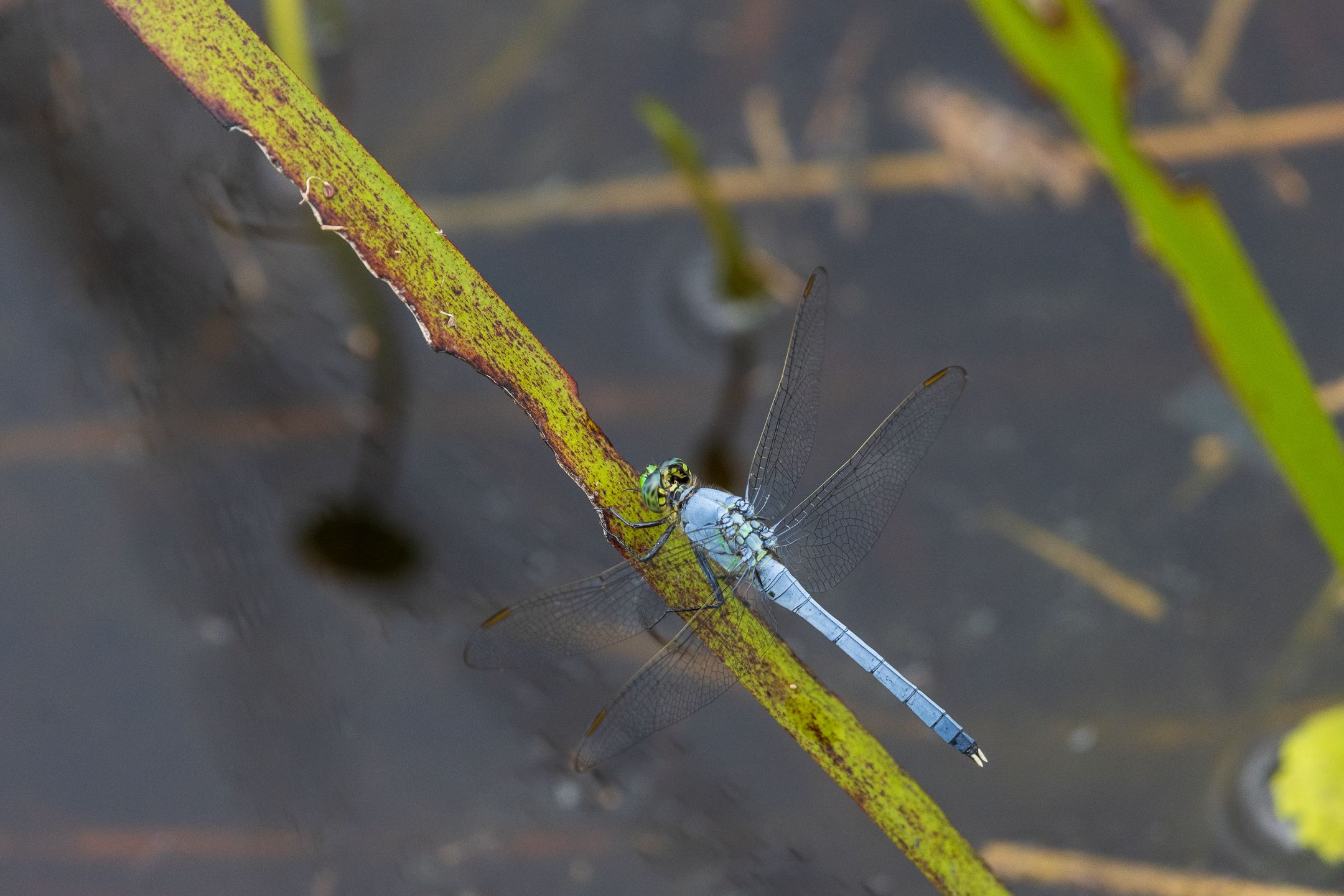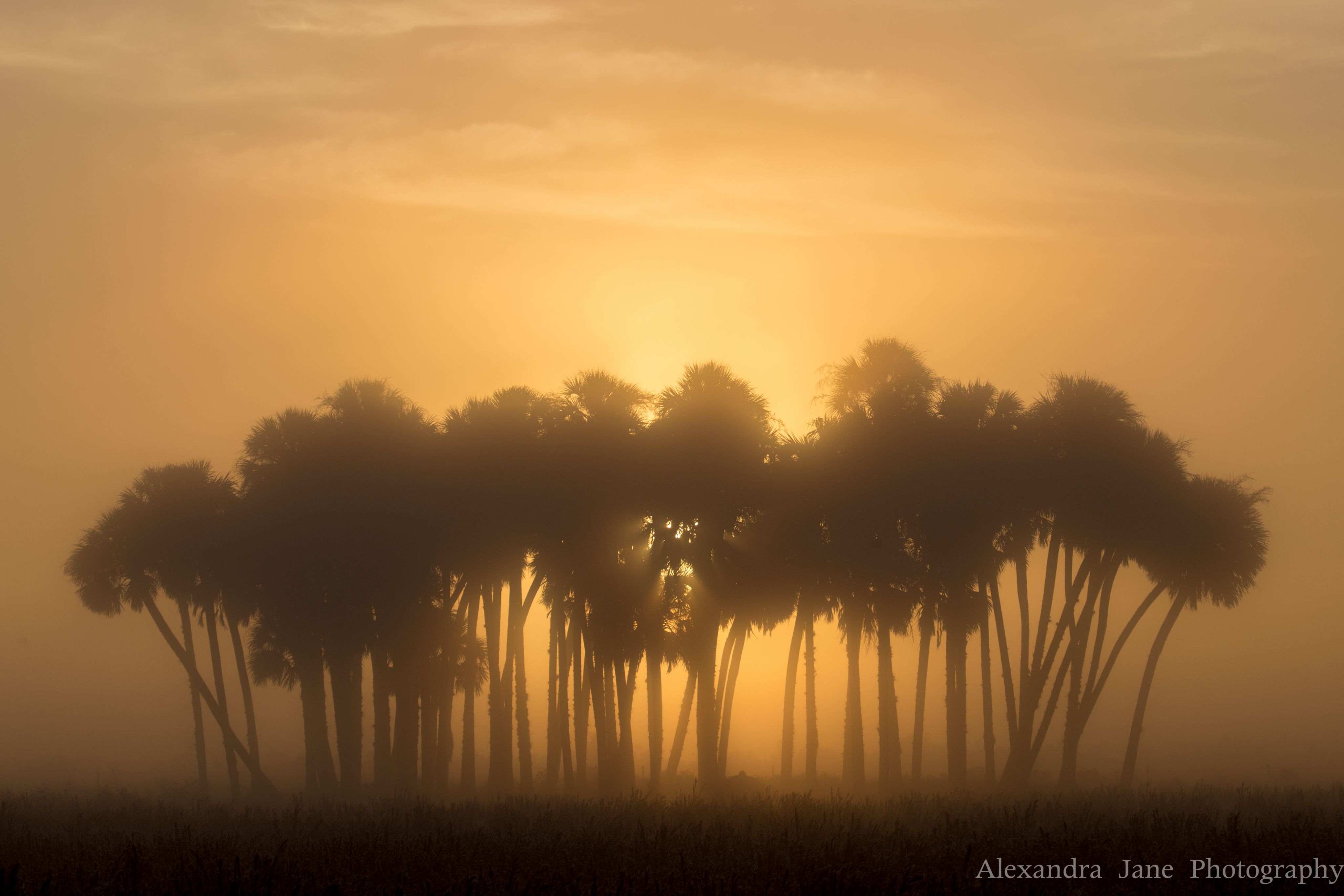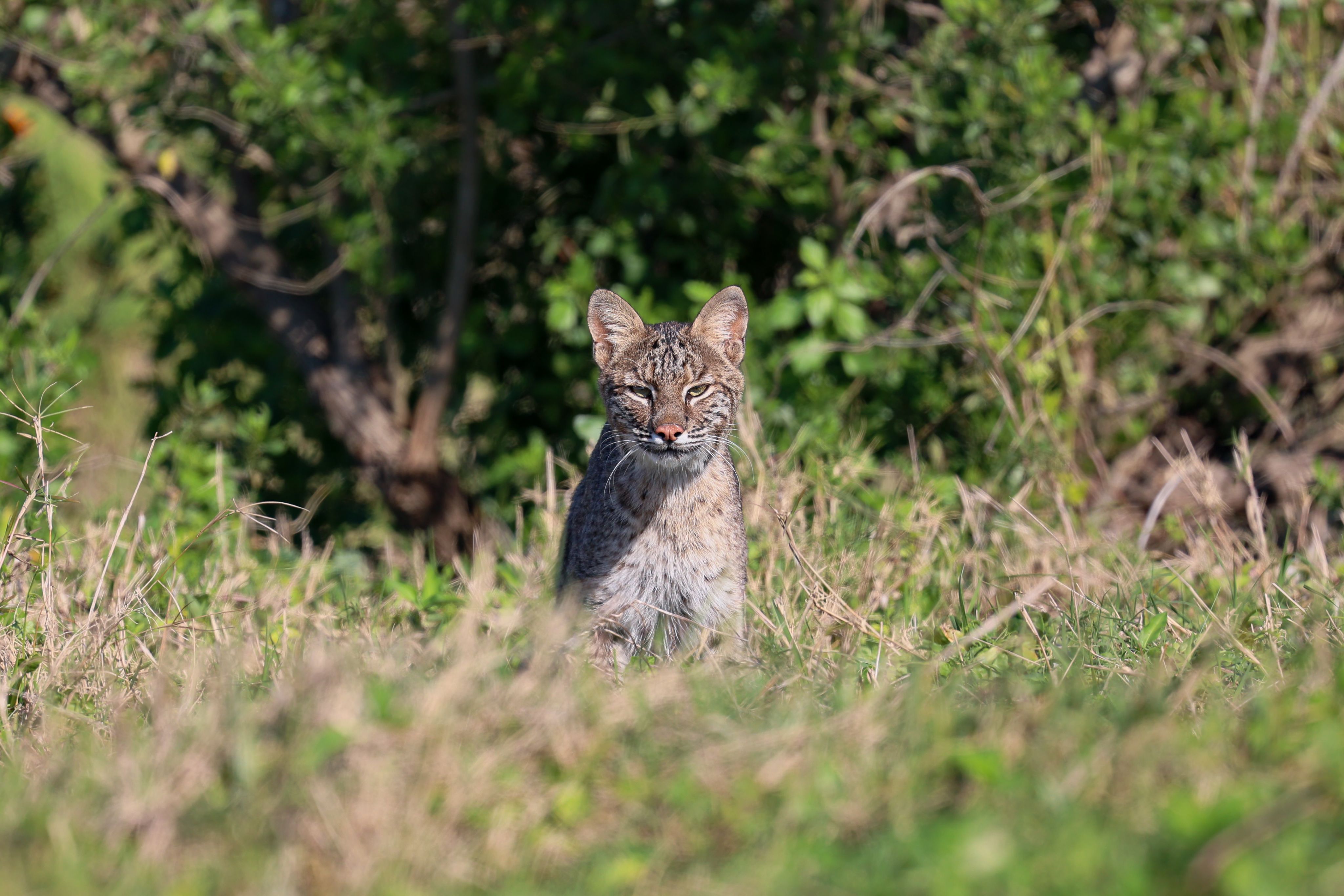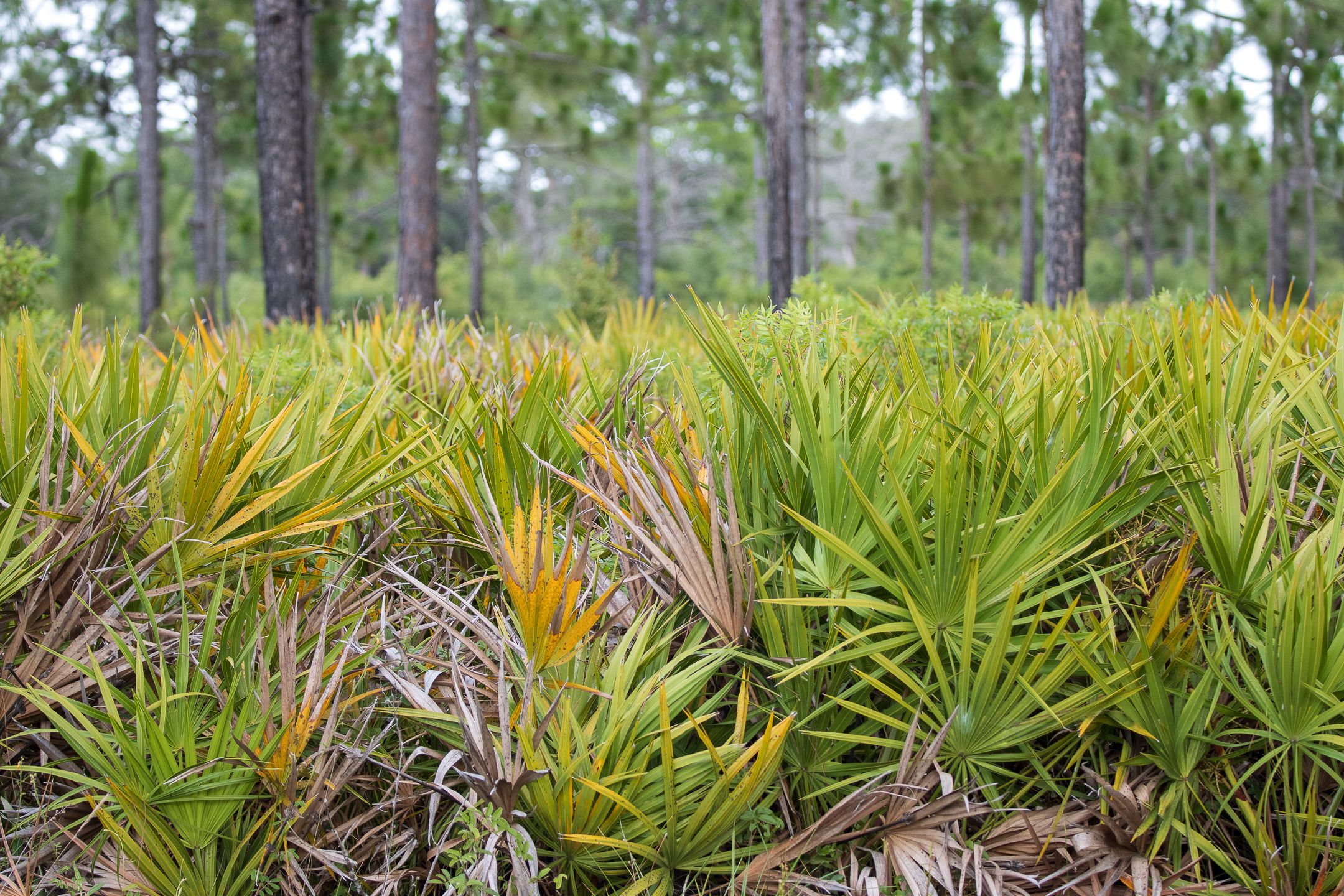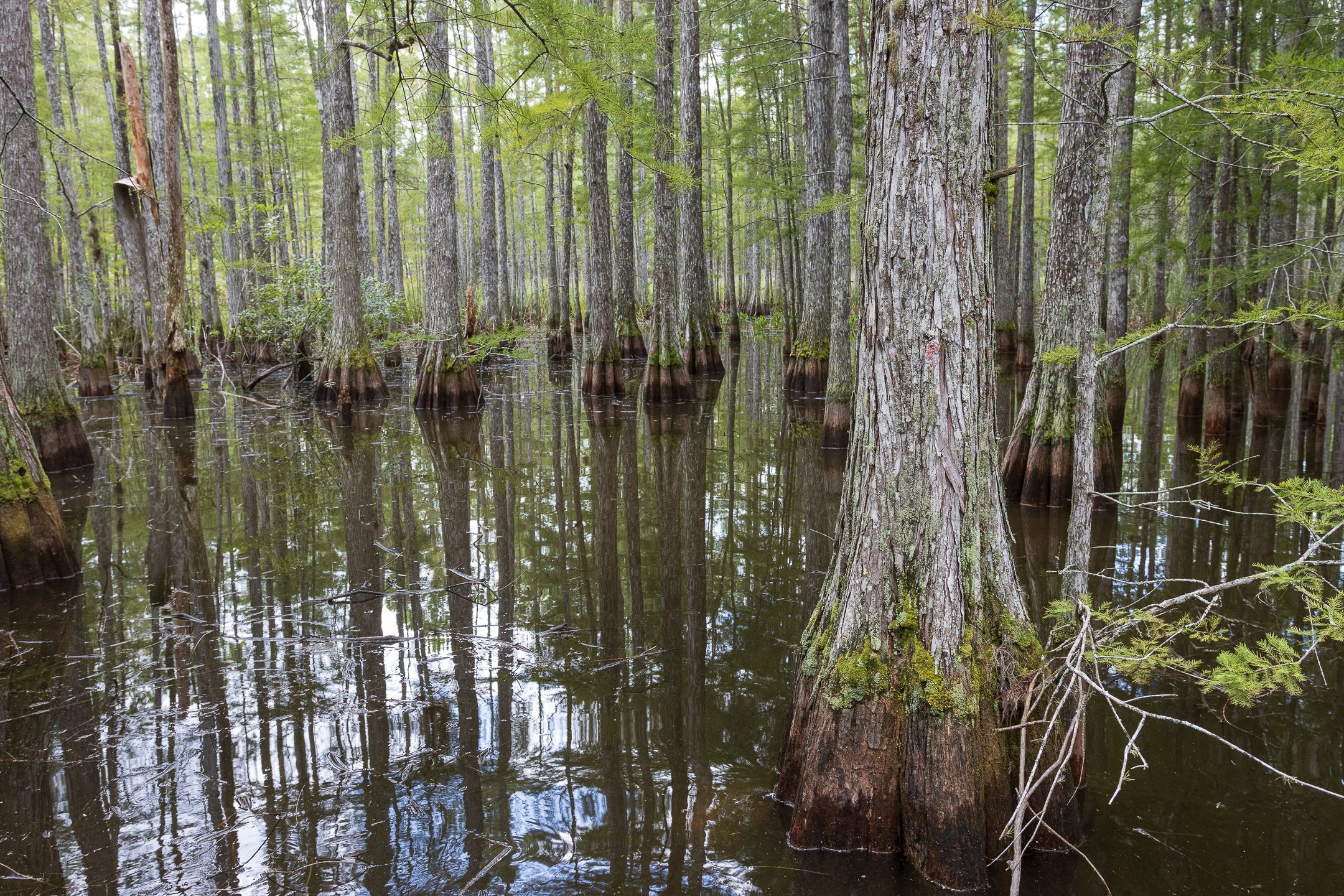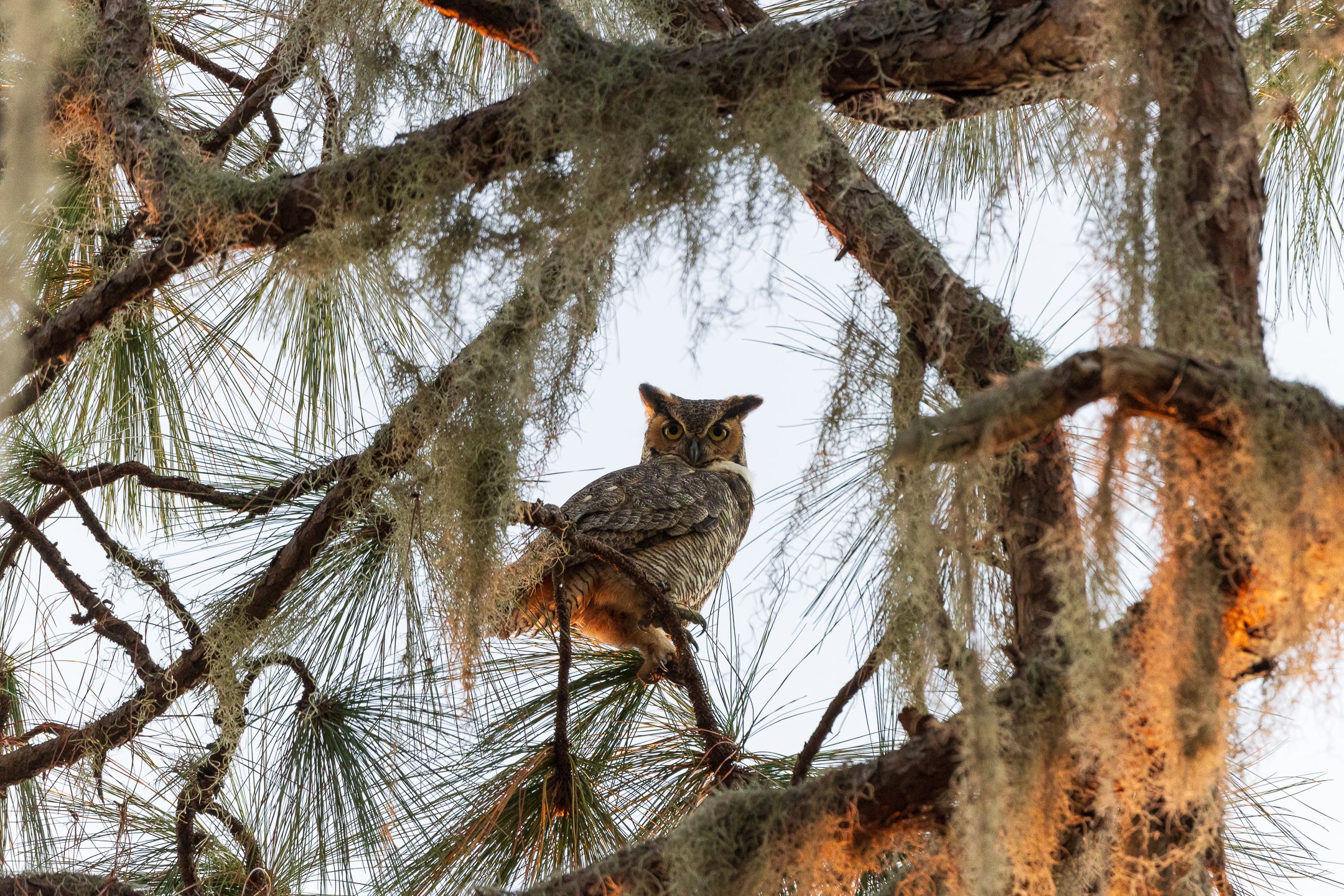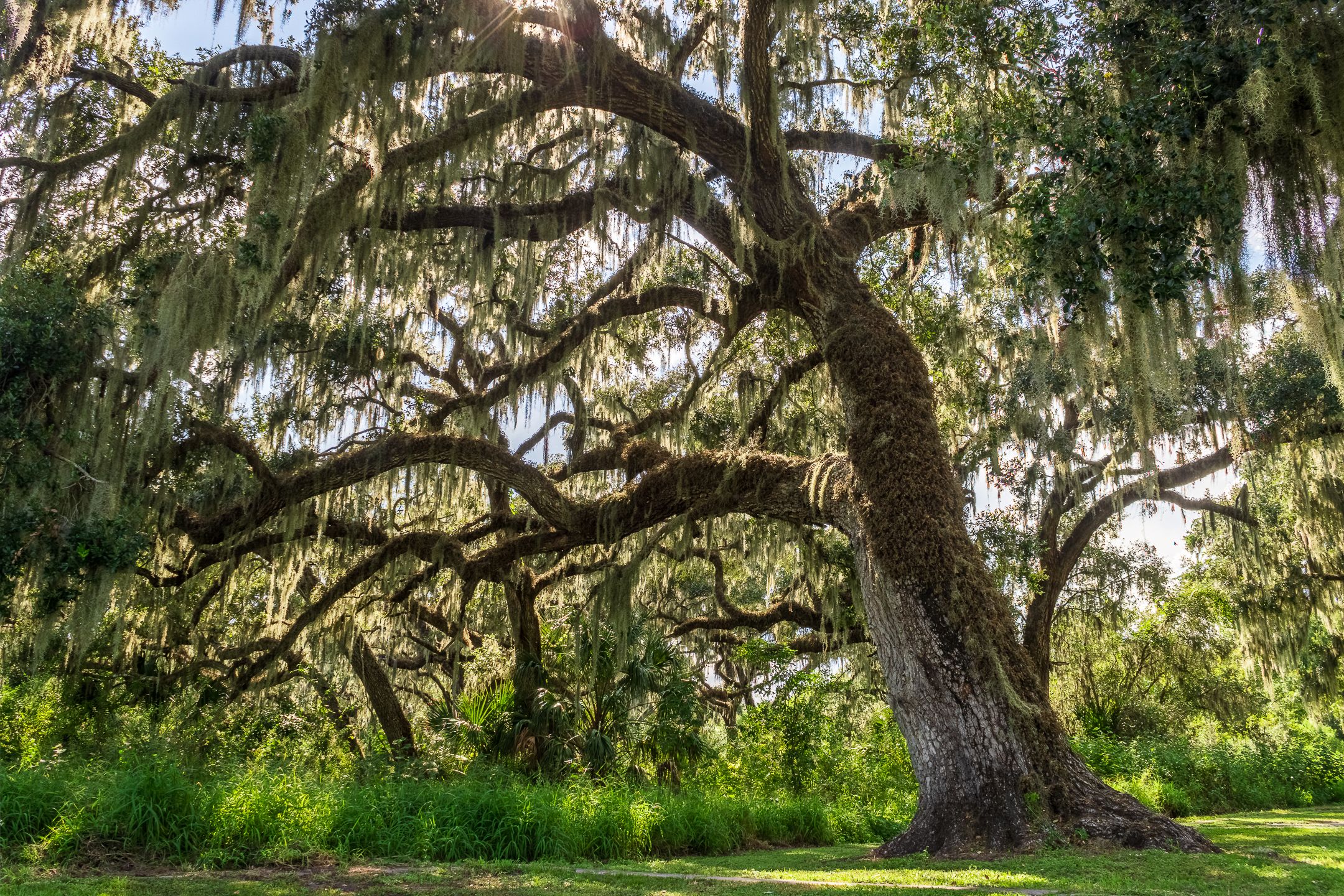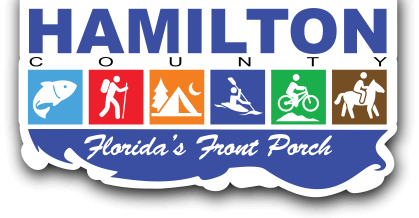Natures Rhythm
By Muralist Christian Stanley
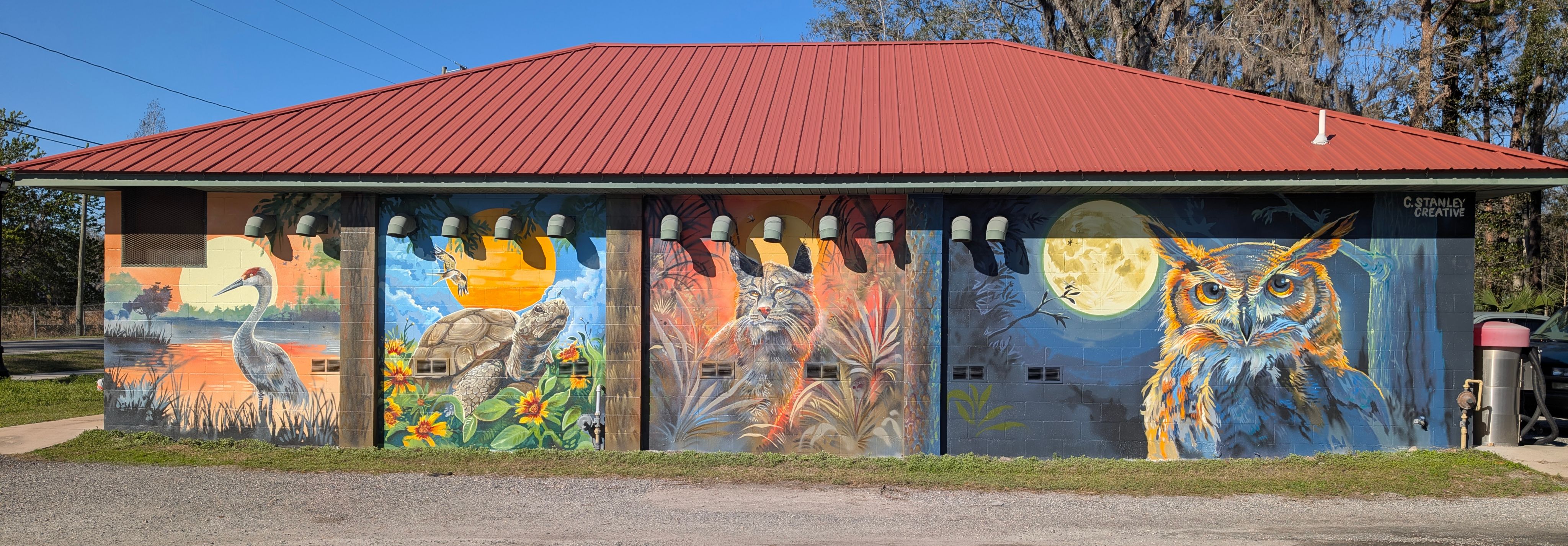
The Florida Wildlife Corridor is an 18-million-acre statewide network of connected lands and waters that supports wildlife and people.
Seen in dark green, 10 million acres are protected as federal lands, state parks and forests, county lands, water management district lands, or private lands under conservation easements.
The remaining 8 million acres in light green are unprotected opportunity areas for conservation and are mostly comprised of agricultural working lands, such as cattle ranches and timber land. Not only do these valuable spaces provide food and fiber for Florida and our nation, but they also provide interconnected landscapes that keep Florida’s wild spaces connected.
Our Mural Campaign is aimed at raising awareness of the importance of the Florida Wildlife Corridor in areas with the greatest ecological significance that have the highest risk of development by 2030.
The geography around White Springs is a vital link in the Florida Wildlife Corridor, with the Suwannee River serving as a natural connector. Originating in the Okefenokee Swamp National Wildlife Refuge, the Suwannee flows south past the Osceola National Forest, reaching Big Shoals State Park and State Forest near White Springs. To the east, Stephen Foster Folk Culture State Park, Suwannee River State Park, and Twin Rivers State Forest lines its banks. This Corridor of protected green space allows wildlife to travel along the Suwannee to either the panhandle, the big bend, or north into Georgia without running into many obstacles.
Hamilton County is home to important fauna like the Florida Black Bear and North American River Otter. The Florida National Scenic Trail also runs through the county, with White Springs being the first Florida Trail Gateway Community. Locals and visitors alike enjoy an abundance of recreational activities in Hamilton County such as kayaking, paddleboarding, biking, camping, horseback riding, and fishing.
The wild spaces around White Springs and Hamilton County are currently in danger because of rapid population growth. Without thoughtful conservation and planning the connected landscape will be lost, resulting in diminished wildlife populations, degraded water quality and negative impacts on the outdoor recreation and ecotourism important to the local economy.
Meet The Artist
Christian Stanley is a Central Florida based artist that has lived in the Orlando area since graduating from the University of Central Florida in 2011 with a degree in graphic design. Born and raised in Stuart, FL, Christian’s art is often influenced by his roots and love for the wildlife of the Southeast. From an early age Christian sought out natural settings for inspiration, and continues to enjoy hiking and wildlife spotting with his wife, Jessica.
The two met in 2017 and soon after formed C. Stanley Creative while painting a small electrical box as a part of a community art initiative. Since then Christian has gone on to paint dozens of murals a year with his largest project to date spanning over 8,000 square feet in size. He has taken his mural art talents across the United States and overseas to international street art festivals.
Christian’s street art work is known for its signature “dash and dot” style, which borders on impressionism to give his subjects depth and vibrant color. He has had the privilege of working with large national brands and local community arts organizations alike.
Christian and Jessica work full time in the arts, and are firm believers in the power of art to change places for the better. In their travels they had the opportunity to see the power of public art at work in communities of all shapes and sizes, and find their most rewarding work to be in towns that understand that art can be used as a tool for community revitalization.

"Natures Rhythm" by Christian Stanley showcases the native flora and fauna of that can be found across different habitats in Hamilton County at different times of the day. This mural is one of three Florida Wildlife Corridor Murals in White Springs meant to highlight Hamilton County's role as a Corridor Gateway Community.
The Florida Fish and Wildlife Conservation Commission (FWC) manages fish and wildlife resources for their long-term well-being and the benefit of people. Thanks to their contributions, you can learn more about the species in this mural. Scroll to learn about each of the species featured.
Photo by Sonja Pedersen
Photo by Sonja Pedersen
Sandhill Crane
(Grus canadensis)
Sandhill cranes are long-legged, long-necked, gray, heron-like birds with a patch of bald, red skin on top of their head. Florida sandhill cranes inhabit freshwater marshes, prairies, and pastures and they occur throughout peninsular Florida north to the Okefenokee Swamp in southern Georgia.
Two subspecies of sandhill crane occur in Florida. The Florida sandhill crane, numbering 4,000 to 5,000, is a non-migratory year-round breeding resident. They are joined every winter by 25,000 migratory greater sandhill cranes, the larger of the two subspecies. The greater sandhill crane winters in Florida but nests in the Great Lakes region. Sandhill cranes nest during late winter and spring on mats of vegetation about two feet in diameter and in shallow water.
Sandhill cranes mate for life are usually seen in very small groups or pairs.
Photo by Ethan Coyle
Photo by Ethan Coyle
Longleaf Pine
(Pinus palustris)
Longleaf pine is an evergreen conifer that gets its name for having the longest leaves of the eastern pine species. The historic range of the longleaf pine once extended from southeastern Virginia to Florida, and west through Louisiana to east Texas. Now just 5 to 6% of the historic ecosystem remains.
Longleaf pine is unique in being both a pioneer species (the first to colonize a disturbed area) and a key member of the climax community (the final, stable ecosystem). In the wild, longleaf pine forests develop a stable grassland ecosystem, home to a rich variety of plants and animals. Fire is an important part of both the ecosystem and the pine population’s health. Regular burns remove competing vegetation and expose the bare soil needed for seeds to germinate.
Photo by Alexander Wallace
Photo by Alexander Wallace
Swallow-tailed Kite
(Elanoides forficatus)
The sight of a swallow-tailed kite is unforgettable: a black-and-white bird of prey with a deeply forked tail soaring through the summer sky.
After spending the fall and winter in South America, kites arrive in Florida in early March to breed. They build nests of small sticks woven with Spanish moss, preferably in tall cypress and pine. These trees emerge from a canopy of prey-rich woodlands, like those of swamps and savannas. Highly social for a raptor, they nest in loose colonies and often forage in small flocks.
The kites eat all kinds of insects and small animals, including frogs, anoles, and snakes. By early July, they begin to gather in large communal roosts for the migration back to South America. The future of swallow-tailed kites depends on protection of lowland forests throughout their breeding range.
Photo by Ethan Coyle
Photo by Ethan Coyle
Gopher Tortoise
(Gopherus polyphemus)
The life of a gopher tortoise revolves around its burrow(s) where they spend up to 80% of their time. Burrows average 15 feet long and 6.5 feet deep, though they have been documented reaching up to 40 feet long and 10 feet deep. Their burrows maintain a stable temperature and humidity year-round, providing protection from extreme temperatures, drought, and fire.
Burrows also offer shelter from predators and provide refuge for more than 350 other species, called commensals, including burrowing owls, Florida mice, indigo snakes, rabbits, gopher frogs, and invertebrates. This ability to be an ecosystem engineer and provide shelter for so many other species makes the gopher tortoise a keystone species.
Periodic natural fires historically played an important role in many of the habitats where tortoises are found, as fire reduces canopy cover and promotes growth of herbaceous forage plants. When fire is suppressed from these environments, the habitat may become unsuitable for gopher tortoises. Prescribed fire is frequently used today to maintain these habitats.
They are currently state listed as threatened and it is illegal to move or disturb them without proper permits.
Photo by Ethan Coyle
Photo by Ethan Coyle
Eastern Pondhawk
(Erythemis simplicicollis)
The eastern pondhawk is a swift and aggressive dragonfly of ponds and still waters. It is in the large family of dragonflies called skimmers. The species is distinguished in that the female is bright green with a banded abdomen and the mature male has a blue abdomen with a green face and green and blue thorax.
They mainly eat mosquitoes and midges, but they’ll also eat butterflies, moths, bees, flies and even other dragonflies. Larger dragonflies like the eastern pondhawk will eat their own body weight in insect prey every day.
Photo by Genna Hill
Photo by Genna Hill
Florida Tickseed
(Coreopsis floridana)
Florida tickseed is one of 12 coreopsis species native to Florida. Coreopsis is Florida’s state wildflower and includes all native Coreopsis species that occur here.
Photo by Alex Freeze
Photo by Alex Freeze
Sabal Palm
(Sabal palmetto)
The Sabal Palm, also known as cabbage palm is an evergreen fan palm that occurs throughout Florida in pinelands, hammocks, coastal dunes, swamps and floodplain forests. It is Florida's state tree, although it is more closely related to grass because of its fibrous trunk structure.
It provides significant food, shelter and nesting material for many species of birds, mammals, reptiles and amphibians. Its terminal bud (or “heart”) is edible and has a cabbage-like taste.
Photo by Parks Marilla
Photo by Parks Marilla
Bobcat
(Lynx rufus)
Bobcats are about twice the size of a domestic cat. They are generally tan to yellowish brown with dark brown or black streaks. The under parts are usually white with black spots and the insides of the legs are marked with black bars. The bobcat’s ears are pointed with short, black tufts while the tail is short and gives the appearance of being "bobbed." The young have mottled or spotted fur with more distinct facial marking than the adults.
Widely distributed throughout Florida in deep forest, swamps, and hammock land. Thick patches of saw palmetto and dense shrub thickets are important as den and resting sites. In rural areas, bobcats can range five or six square miles and generally cover their territory in a slow, careful fashion. In urban to suburban areas, the range of territory usually decreases to 1 or 2 miles.
An efficient hunter, the bobcat hunts by sight and usually at night. Seeing a bobcat during the day is not uncommon because they sleep for only 2 to 3 hours at a time. In Florida, squirrels, rabbits, and rats are their primary prey species.
Photo by Ethan Coyle
Photo by Ethan Coyle
Saw Palmetto
(Serenoa repens)
Saw palmetto is an evergreen shrub found in scrub, pinelands, coastal hammocks, and dunes in all of Florida but mainland Monroe County. There are at least 311 recorded species that use saw palmetto, while many other species have documented interlocking relationships with the plant. It is extremely valuable to hundreds of species of birds, mammals, and insects as a source of food and cover. Its flowers are a major source of nectar for honeybees and its berries are a staple for the Florida black bear.
Photo by Ethan Coyle
Photo by Ethan Coyle
Bald Cypress
(Taxodium distichum)
Bald Cypress trees tend to grow in forested wetlands, along streams and rivers, in spring runs and ponds, and in places with still or slow-moving water. Bald Cypresses are the most flood-tolerant of all Florida's trees, which is why they dominate swamps that have long flood periods. Bald Cypress swamps are home to many species, with large mammals and birds especially take advantage of the plant density and hollow trees of the swamps.
They are known for their pneumatophores (knees) which function to transport air to drowned roots underground and their buttressed (flared) trunks which both work together to keep the tree stable in its wet environment. Bald Cypress trees can grow up to 150 feet and reach six feet in diameter and have flat leaves that grow on both sides of the branchlets.
Photo by Ethan Coyle
Photo by Ethan Coyle
Great Horned Owl
(Bubo virginianus)
The great horned owl is the largest of Florida's owls at 18 to 25 inches tall. They have tall "ear tufts" and large yellow eyes that make them easily recognizable when seen during daylight hours.
They are found throughout Florida and roost in large, messy nests, in tall trees. Great horned owls don't build their own nests, so they often take over old nests from other birds. They are very adaptable and comfortable in both park settings and rural areas.
Great horned owls have the most diverse diet of any North American raptor, eating things like rodents, insects, and other birds.
Photo by Ethan Coyle
Photo by Ethan Coyle
Southern Live Oak
(Quercus virginiana)
The live oak is one of those plants that is inseparable from Florida’s identity. Since live oaks live for hundreds of years, several generations get to enjoy each majestic, sprawling tree that is draped with moss. These trees provide many ecosystem services and habitat for many species. They are massive trees that can reach 60-80 feet tall and up to 60-120 feet wide when under the right conditions.
Live oaks possibly get their name because, unlike most other deciduous oaks which drop their leaves in the winter and might look dead, live oaks lose and replace their leaves gradually throughout the year and so look "live".
Unlike many other oak trees, live oaks have narrow, smooth-edged leaves. The edges of these shiny, thick, dark green leaves often curl under. The thick, waxy coating and curling help the tree conserve moisture during the long, hot summers.
The White Springs murals were made possible by the following partners:
White Springs Historic Preservation Society
